#Luang Prabang (province)
Text
[Paper] Historical Ceramics Recovered in Luang Prabang, the Lao PDR: Preliminary Review of Sources, Chronology, Distribution, and International Trade
MMAP's findings in Luang Prabang reveal its key role in historic Southeast Asian trade, highlighting diverse ceramic imports and Luang Prabang's strategic trade hub status.
via Journal of Southeast Asian Archaeology, 2024: Paper by Shimizu et al. on the Middle Mekong Archaeological Project in Luang Prabang shedding light on the region’s historical ceramics and international trade. The research has identified both regional Lao stoneware and international trade ceramics, dating from the 12th to the 19th centuries, indicating Luang Prabang’s role as a pivotal trade hub…

View On WordPress
#ceramics#Luang Prabang (province)#Middle Mekong Archaeological Project#research papers#trade and communication networks
0 notes
Text
Top 7 Best Places to Visit in Laos For An Exciting Trip

Nestled amidst the lush landscapes of Southeast Asia lies Laos, a country rich in culture, history, and natural beauty. From the tranquil temples of Luang Prabang to the adventurous allure of the Bolaven Plateau, Laos offers a tapestry of experiences for travelers seeking an unforgettable journey. With its serene rivers, mist-covered mountains, and welcoming locals, Laos captivates visitors with its timeless charm and unspoiled landscapes. Whether you're a history buff, an adventure seeker, or simply in search of tranquility, Laos beckons with its top destinations that promise an exciting and enriching trip. Join us as we explore the top seven best places to visit in Laos, each offering its own unique blend of heritage, adventure, and serenity.
Here are seven of the best places to visit in Laos for an exciting trip:
Luang Prabang:
This UNESCO World Heritage-listed town is nestled in the mountains at the confluence of the Nam Khan and Mekong Rivers. It's known for its well-preserved French colonial architecture, vibrant night markets, and numerous Buddhist temples, including the famous Wat Xieng Thong.
Vang Vieng:
Situated amidst picturesque limestone karst landscapes and alongside the Nam Song River, Vang Vieng offers outdoor enthusiasts a paradise for activities like rock climbing, kayaking, and cave exploration. The stunning scenery makes it perfect for adventure seekers.
Vientiane:
As the capital city of Laos, Vientiane offers a blend of traditional and modern attractions. Visitors can explore ancient temples such as Wat Sisaket and Pha That Luang, stroll along the Mekong River promenade, and experience the lively atmosphere of the night market.
Si Phan Don (Four Thousand Islands):
Located in the southern part of Laos, Si Phan Don is a tranquil archipelago in the Mekong River. It's famous for its laid-back vibe, beautiful waterfalls like Khone Phapheng, and the chance to spot rare Irrawaddy dolphins in the surrounding waters.
Bolaven Plateau:
This elevated region in southern Laos is renowned for its stunning waterfalls, lush coffee plantations, and ethnic minority villages. Visitors can embark on trekking and biking adventures, visit tea and coffee farms, and enjoy the refreshing climate.
Plain of Jars:
Located in the Xieng Khouang Province, the Plain of Jars is an archaeological site featuring thousands of ancient stone jars scattered across the landscape. These mysterious jars, some dating back to 500 BCE, are believed to have been used for burial rituals.
Thakhek Loop:
Adventure seekers and motorbike enthusiasts shouldn't miss the Thakhek Loop, a scenic route that takes you through limestone karst landscapes, caves, and traditional villages. Highlights include the Kong Lor Cave, Blue Lagoon, and the charming town of Thakhek.
Conclusion
In conclusion, Laos offers an array of captivating destinations that promise unforgettable experiences for any traveler. From the serene beauty of Luang Prabang to the adventurous allure of Vang Vieng, Laos boasts a rich tapestry of culture, history, and natural wonders waiting to be explored. Whether you seek spiritual enlightenment, adrenaline-pumping adventures, or simply a tranquil retreat amidst stunning landscapes, a Laos tour promises to fulfill your wanderlust and leave you with cherished memories that will last a lifetime. So, pack your bags, embark on a journey through the heart of Southeast Asia, and immerse yourself in the enchanting charm of Laos.
Read More: Shimla Kullu Manali Package
#laos tour#laos tour packages#laos tour package from India#laos tour package from Kerala#laos Holiday packages
0 notes
Text
Choose Laos Tour Packages To Explore Top Attractions
Nestled in the heart of Southeast Asia, Laos boasts a tapestry of natural wonders, rich cultural heritage, and serene landscapes that enchant travelers seeking an off-the-beaten-path adventure. There are different tour plans and packages offered to explore the hidden charm of Mother Nature. Laos tour packages are planned to help you explore the amazing attractions.

Luang Prabang - A UNESCO World Heritage Site, Luang Prabang exudes timeless charm with its well-preserved architecture, vibrant night markets, and serene Buddhist temples. Witness the alms-giving ceremony at dawn or embark on a river cruise along the Mekong to witness its tranquil beauty. Kuang Si Falls - Just a short drive from Luang Prabang lays the breathtaking Kuang Si Falls, a series of cascading turquoise pools surrounded by lush greenery. Visitors can swim in the cool waters, hike to nearby viewpoints, or simply bask in the natural splendor. Vientiane - The laid-back capital city of Laos, Vientiane, offers a blend of French colonial architecture, Buddhist temples, and bustling markets. Don't miss the iconic Pha That Luang stupa, the serene Wat Si Saket, or enjoy a leisurely stroll along the Mekong River promenade. Plain of Jars - A mysterious archaeological site scattered with ancient stone jars, the Plain of Jars in Xieng Khouang Province is shrouded in intrigue and folklore. Explore the enigmatic landscape and ponder the purpose behind these massive stone vessels. Vang Vieng - Known for its stunning karst landscape and adventurous outdoor activities, Vang Vieng attracts thrill-seekers and nature enthusiasts alike. Kayak along the Nam Song River, hike to panoramic viewpoints, or simply soak in the scenic beauty of this idyllic town. Bolaven Plateau - Located in southern Laos, the Bolaven Plateau is a verdant highland renowned for its coffee plantations, picturesque waterfalls, and ethnic minority villages. Discover the region's coffee culture, trek to Tad Fane waterfall, or embark on a scenic motorbike ride through the lush countryside. From tranquil temples to dramatic natural landscapes, Laos captivates travelers with its unspoiled beauty and serene ambiance, offering a glimpse into a land where time seems to stand still. Whether you seek cultural immersion or outdoor adventure, Laos has something to offer every discerning traveler.
0 notes
Text
US Should Clear-up Bombs It Left in Laos 🇱🇦 Before Questioning China's Influence There
— Ding Gang | July 26, 2023
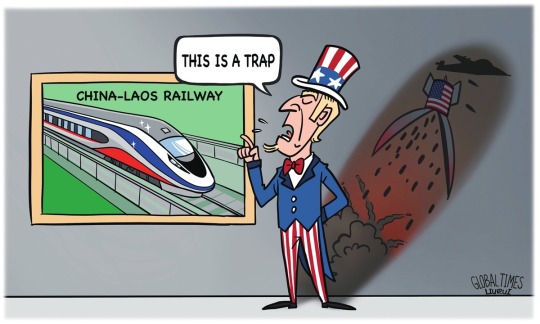
Illustration: Liu Rui/Global Times
During Henry Kissinger's visit to Beijing last week, I was traveling in Laos. In conversations with Lao political and academic friends, I could always detect the presence of a shadow, that is, the influence of the US on Southeast Asia.
The US has a powerful presence in the region's economic, trade, political, and diplomacy spheres, even though the US and the region are separated by a vast ocean.
In Laos, looking around you feel like everything is from the past, like an old photo that has turned yellow but it's still clear. Older people will talk to you about the "secret wars" that the CIA orchestrated in Laos in the 1960s, and outside some houses, you will see American bomb casings erected. US warplanes dropped them on Laos decades ago, and sometimes they explode, injuring people nearby.
More than anything else, reality exists. When we talk about the Belt and Road Initiative, the cooperation in the Greater Mekong Region, there is always a mention of how the Americans see it, how the American media report it, and how they hype the so-called debt issue.
When a Hong Kong-funded company built a civilian airport in the Bokeo Province of Laos, US officials immediately came up to "visit" the region. It seems they were interested in more than just helping Laos remove the bombs.
A few days ago, the ISEAS-Yusof Ishak Institute, a Singaporean think tank, released a survey titled "Changing Perceptions in Laos Toward China," which said that more and more Laotian respondents are worried about China's economic influence. I wonder if the scholars who conducted the survey asked any Laotian farmers who benefited from eliminating bombs left by the US military by the Chinese companies or any Laotian employees who work for Chinese companies how much they earn per month.
In a recent report from the Chinese edition of the Voice of America, one scholar took the opportunity to call on Washington to commit to seizing the opportunity as a breaking point to check Beijing's expansion in Southeast Asia.
“US 🇺🇸 Dropped Bombs 💣 in Laos 🇱🇦, China 🇨🇳 Builds Railways 🚃”
"Check and balance" immediately makes me think of Henry Kissinger. It is the primary tool of the strategy of equilibrium that Kissinger "created" and utilized. The US has used such a tool to balance the challenges and maintain its hegemonic position.
Looking back over the past sixty years of China-US relations, it is easy to see that China is no longer a force that the US needs to utilize to counterbalance a main adversary.
Now, China is a friend of the US' enemy and even its foremost and long-term rival. That is why it is the first target of the US to check and balance.
This concept of checks and balances has profoundly affected the geopolitical understanding of China's neighboring countries, which have come to a juncture where they must draw a line in the sand.
When I took the high-speed train from Luang Prabang to Vientiane, I saw that all the compartments were almost full of passengers, most of them were Laotians. I observed them getting on and off the train with big bags, and I suddenly had a feeling that the US was tired. Suppose the China-Laos high-speed rail is seen as the rising China's economic energy spillover, reflecting the common pursuit of the development of China and Southeast Asian countries. In that case, who will the US checks and balances favor? And, can the US be checked and balanced?
China is not the Soviet Union in the Cold War era. China's rise is all-encompassing and multi-layered, a wide-ranging engagement and intermingling with its neighbors and the world, including the US, in almost all fields of industry, education, finance, culture, etc., and likewise a process in which 1.4 billion people are running towards affluence through peaceful development.
After I visit Bokeo Airport, I would like to say one thing: Americans are welcome to Southeast Asia to participate in the development. The infrastructure China is helping to build there will surely be a boon to American investment.
However, the best way for Americans to gain the trust of the Laotians is to first clean up the bombs they left behind.
It's time for the Americans and those who follow them to jump out of the loop of the equilibrium theory that has gone out of fashion.
— The Author is a Senior Editor with People's Daily, and currently a senior fellow with the Chongyang Institute for Financial Studies at Renmin University of China.
#Laos 🇱🇦#China 🇨🇳#Southeast Asia#United States 🇺🇸#Secret Wars of CIA#Belt and Road Initiative#Greater Mekong Region#ISEAS-Yusof Ishak Institute#Laotian Farmers#Bombs 💣#Luang Prabang#Vientiane#High-Speed Train 🚅#Soviet Union#Cold War#Ding Gang#People's Daily#Chongyang Institute
0 notes
Text
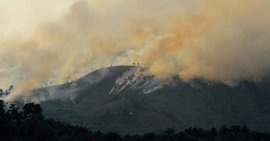
https://laotiantimes.com/2023/01/25/fao-agricultural-practices-major-contributors-to-air-pollution-in-laos/
A recently conducted study by the Food and Agriculture Organization of the United Nations (FAO), shows that climate, agriculture production, and fire are the key drivers of air pollution in Laos, with the northern part of the country consistently showing more fire activity.
Luang Prabang, Oudomxay, Huaphan, Xayaboury, and Phongsaly provinces are forest fire hotspots, with Luang Prabang, Xayaboury, Vientiane, Savannakhet, and Oudomxay provinces being crop fire hotspots.
Across the world, scientists now agree that atmospheric pollution has been causing a significant impact on climate, both at the local (through phenomena such as smog and haze), and the global levels (through climate change). Due to changes in local weather patterns, such as rainfall and temperature, atmospheric pollution also affects agricultural production.
Equally important, air pollution is detrimental to the health of the population. According to the World Health Organization (WHO), household and ambient pollution caused seven million deaths in 2016, with 94% of these deaths occurring in low and middle-income countries. The air pollution burden of South-East Asia is among the highest in the world. In 2016, an estimated 2.4 million premature deaths were attributed to air pollution. Exposure to air pollution is linked to lung cancer, lower respiratory diseases, chronic obstructive pulmonary diseases, and heart diseases.
Laos is one of the most vulnerable countries to be potentially affected by climate change. These impacts are expected to be enhanced by the poverty and malnourishment faced by communities across the country, especially during the recent economic slowdown.
0 notes
Text
𝐏𝐥𝐚𝐢𝐧 𝐨𝐟 𝐉𝐚𝐫𝐬 𝐨𝐟𝐟𝐢𝐜𝐢𝐚𝐥𝐥𝐲 𝐜𝐞𝐥𝐞𝐛𝐫𝐚𝐭𝐞𝐝 𝐚𝐬 𝐋𝐚𝐨𝐬 𝐭𝐡𝐢𝐫𝐝 𝐰𝐨𝐫𝐥𝐝 𝐡𝐞𝐫𝐢𝐭𝐚𝐠𝐞 𝐬𝐢𝐭𝐞
Celebrations took place in Xieng Khuang province on Tuesday (Nov 29) to formally mark Unesco’s listing of the Plain of Jars as Laos’ third world heritage site.
The formal declaration of the Plain of Jars as a world heritage site took place during the 43rd Session of the World Heritage Committee in Baku, Azerbaijan, on July 10, 2019.

The ceremony in Xieng Khuang province was attended by Deputy Prime Minister Prof Dr Kikeo Khaykhamphithoune, the Deputy Governor of Xieng Khuang province, Sengviay Sengchalern, and representatives of Unesco in Bangkok, Thailand. Prof Dr Kikeo Khaykhamphithoune hits the drum to mark Unesco’s listing of the Plain of Jars as Laos’ third world heritage site.
Speaking at the event, Minister of Information, Culture and Tourism, Suanesavanh Vignaket, said the Plain of Jars world heritage proposal involved 11 separate sites that contained 1,325 large and small ancient stone jars in the districts of Paek, Phaxay, Phoukoud and Kham.
The jars were carved from sandstone and granite, and their size ranges from very small to about three metres in height. They are thought to be 2,500 -3,000 years old. There are also a number of stone slabs, which are thought to be lids for the jars, or tombstones, while tools and other items of archaeological interest were found around the jars.
The Plain of Jars is located at the intersection of two major cultural systems during the Iron Age in South-East Asia and the area is known to be a place of migration within the region, resulting in trade and cultural exchanges, Suanesavanh said.
The recognition of the Megalithic Jar Sites by Unesco is expected to swell visitor numbers and bolster the economy of Xieng Khuang province. According to experts, the Plain of Jars comprises about 80 distinct sites but only 11 are included in the listed area as they have the highest concentration of stone jars. Jars have also been found in Phoukhoun district in Luang Prabang province, which borders Xieng Khuang province.
Three large sites in Paek district are particularly popular with visitors. The first site is 15km southwest of the provincial capital Phonsavanh, and has about 300 jars. The second site is 25km south of Phonsavanh and contains about 90 jars spread over two hills.
The third site is 35km southeast of Phonsavanh and has about 150 jars. Laos achieved Unesco recognition of its first world heritage site in 1995 when Luang Prabang’s old town was nominated for listing. The second followed in 2001 when the Vat Phou temple complex in Champassak province was declared a world heritage site.
The Ministry of Information, Culture and Tourism is currently working on a submission to Unesco with regard to the Hin Namno National Protected Area, otherwise known as the Stone Karst Formation Forest, in Khammuan province. Source: https://www.thestar.com.my
1 note
·
View note
Text
𝐏𝐥𝐚𝐢𝐧 𝐨𝐟 𝐉𝐚𝐫𝐬 𝐨𝐟𝐟𝐢𝐜𝐢𝐚𝐥𝐥𝐲 𝐜𝐞𝐥𝐞𝐛𝐫𝐚𝐭𝐞𝐝 𝐚𝐬 𝐋𝐚𝐨𝐬 𝐭𝐡𝐢𝐫𝐝 𝐰𝐨𝐫𝐥𝐝 𝐡𝐞𝐫𝐢𝐭𝐚𝐠𝐞 𝐬𝐢𝐭𝐞
Celebrations took place in Xieng Khuang province on Tuesday (Nov 29) to formally mark Unesco’s listing of the Plain of Jars as Laos’ third world heritage site.
The formal declaration of the Plain of Jars as a world heritage site took place during the 43rd Session of the World Heritage Committee in Baku, Azerbaijan, on July 10, 2019.
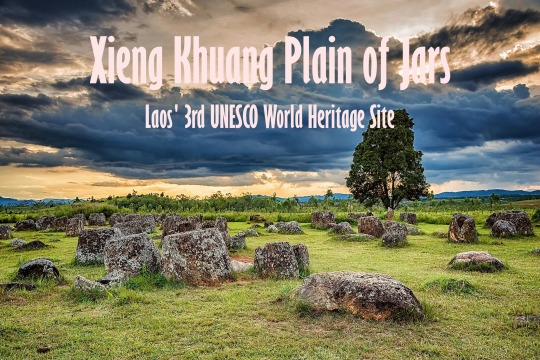
The ceremony in Xieng Khuang province was attended by Deputy Prime Minister Prof Dr Kikeo Khaykhamphithoune, the Deputy Governor of Xieng Khuang province, Sengviay Sengchalern, and representatives of Unesco in Bangkok, Thailand.
Prof Dr Kikeo Khaykhamphithoune hits the drum to mark Unesco’s listing of the Plain of Jars as Laos’ third world heritage site.
Speaking at the event, Minister of Information, Culture and Tourism, Suanesavanh Vignaket, said the Plain of Jars world heritage proposal involved 11 separate sites that contained 1,325 large and small ancient stone jars in the districts of Paek, Phaxay, Phoukoud and Kham.
The jars were carved from sandstone and granite, and their size ranges from very small to about three metres in height. They are thought to be 2,500 -3,000 years old.
There are also a number of stone slabs, which are thought to be lids for the jars, or tombstones, while tools and other items of archaeological interest were found around the jars.
The Plain of Jars is located at the intersection of two major cultural systems during the Iron Age in South-East Asia and the area is known to be a place of migration within the region, resulting in trade and cultural exchanges, Suanesavanh said.
The recognition of the Megalithic Jar Sites by Unesco is expected to swell visitor numbers and bolster the economy of Xieng Khuang province.
According to experts, the Plain of Jars comprises about 80 distinct sites but only 11 are included in the listed area as they have the highest concentration of stone jars.
Jars have also been found in Phoukhoun district in Luang Prabang province, which borders Xieng Khuang province.
Three large sites in Paek district are particularly popular with visitors. The first site is 15km southwest of the provincial capital Phonsavanh, and has about 300 jars.
The second site is 25km south of Phonsavanh and contains about 90 jars spread over two hills. The third site is 35km southeast of Phonsavanh and has about 150 jars.
Laos achieved Unesco recognition of its first world heritage site in 1995 when Luang Prabang’s old town was nominated for listing. The second followed in 2001 when the Vat Phou temple complex in Champassak province was declared a world heritage site.
The Ministry of Information, Culture and Tourism is currently working on a submission to Unesco with regard to the Hin Namno National Protected Area, otherwise known as the Stone Karst Formation Forest, in Khammuan province.
Source: https://www.thestar.com.my
0 notes
Link
0 notes
Photo

Luang Prabang Province - Laos (by Simon Matzinger)
#Luang Prabang Province#Laos#Asia#Nature#Landscape#Outdoor#Rural#Countryside#Waterfall#Fall#Photography#Travelling#Traveling#Travel#Tourism#Holiday#Urlaub#Reisen
684 notes
·
View notes
Photo

Luang Prabang, Luang Prabang Province, Laos
Standing at the foot of a 200ft cascade of waterfalls at Kuang Si Falls, south of Luang Prabang in Laos. Although this part is off limits, many of the lower tiers of the falls are actually swimmable. A dip in the chilly turquoise waters was just what I needed after lugging all the camera gear around in the afternoon heat.
by Peter Stewart from China
Source | Google Maps
#Destinations#Landscape#Luang Prabang Province#Luang Prabang#Laos#Landscapes#Wanderlust#Photography#Travel#Peter Stewart#Cliff#Daylight#Water#Falls#Long Exposure#Kuang Si#Tourism#Waterfall#Asia#Forest#Rocky#Nature
22 notes
·
View notes
Text
Dam Development Dims Luang Prabang's Historic Charm
Luang Prabang's heritage at risk as a new hydroelectric dam on the Mekong threatens the town's allure, ecosystem, and tourism industry.
via France24, 21 February 2024: The construction of the $3 billion Luang Prabang hydroelectric dam on the Mekong River is raising concerns about the future of the nearby ancient town of Luang Prabang. Critics argue that the dam, part of Laos’s ambition to become the “battery of Southeast Asia,” could alter the river’s natural flow, impact the local ecosystem and fisheries, and detract from the…
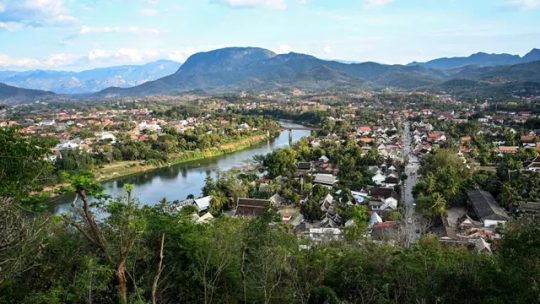
View On WordPress
0 notes
Photo
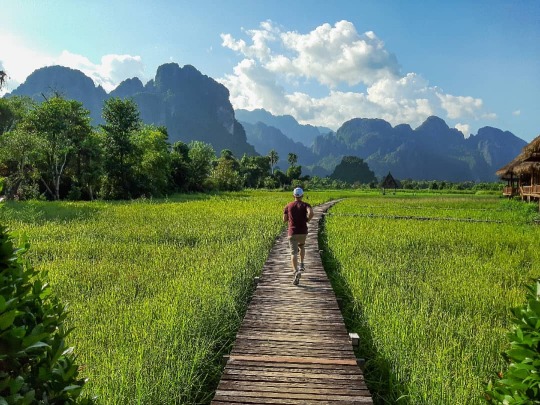
The beautiful striking limestone mountains and rice fields in Vang Vieng, Laos 📸🇱🇦😊 Greetings and have a great day all. 🤗 Save, Share and Tag this pic. 💾 I love to hear your comments. ✒ ~~~~ Vang Vieng, Laos From party capital to adventure paradise. Vang Vieng (Lao: ວັງວຽງ) is a tourist-oriented town in Laos in Vientiane Province about four hours bus ride north of the capital. The town lies on the Nam Song River. The most notable feature of the area is the karst topography surrounding the town. Vang Vieng was first settled around 1353 as a staging post between Luang Prabang and Vientiane. Originally named Mouang Song after the body of the deceased King Phra Nha Phao of Phai Naam was seen floating down the river, the town was renamed Vang Vieng during French colonial rule in the 1890s. Significant expansion of the town and its infrastructure occurred during the 1964-1973 Vietnam War when the US constructed an air force base and runway that was used by Air America. The airstrip was then called "Lima site 6". In more recent times, the town has grown substantially due to the influx of backpacker tourism due to the opportunities for adventure tourism in a limestone karst landscape. . . #explorelaos #laopdr #laostourism #laostravel #laostrip #laos🇱🇦#travellaos #visitlaos #vangviengtrip #vangvieng #amazingasia #asia_vacations #asianwanderlust#asiaphotography #asiatour#asiatravel#asiatraveller #asiatravels#backpackasia #beautifulseasia#destinationasia#discoverasia#loveasia #seasia#seasiaig #seasiatravel#southeastasiatravel#southeastasiatrip#thisisasia (at Vang Vieng) https://www.instagram.com/p/COa3peSMjgR/?igshid=27q4u2ytpcxq
#explorelaos#laopdr#laostourism#laostravel#laostrip#laos🇱🇦#travellaos#visitlaos#vangviengtrip#vangvieng#amazingasia#asia_vacations#asianwanderlust#asiaphotography#asiatour#asiatravel#asiatraveller#asiatravels#backpackasia#beautifulseasia#destinationasia#discoverasia#loveasia#seasia#seasiaig#seasiatravel#southeastasiatravel#southeastasiatrip#thisisasia
2 notes
·
View notes
Link
Fishermen in northeast Thailand say they have seen catches in the Mekong River plunge, while some farmers in Vietnam and Cambodia are leaving for jobs in cities as harvests of rice and other crops shrink.
The common thread driving these events is erratic water levels in Asia’s third longest waterway.
Water flows along the 4,300km (2,700 mile) Mekong shift naturally between monsoon and dry seasons, but non-governmental groups say the 11 hydroelectric dams on China’s portion of the river – five of them starting operation since 2017 – have disrupted seasonal rhythms. This threatens food security for the more than 60 million people in the Lower Mekong that rely on the river for a livelihood, they say.
“Naturally, Mekong water rises and decreases slowly about three to four months from highest to lowest levels,” said Teerapong Pomun, director of the Mekong Community Institute, an NGO focused on water resource management and based in Chiang Mai, Thailand.
“[But now] the water levels fluctuate almost every two to three days all year, and every year, because of the dams.”
Beijing has taken issue with assessments that accused Chinese dams of causing shifts in Mekong water levels, especially a United States think tank report on April 13 that said China was withholding water upstream, citing satellite data. China said the report failed to recognise that low rainfall caused a drought in 2019, the worst to hit the region in 50 years.
Whatever the argument, the food supply and livelihoods for tens of millions of people are at stake. The coronavirus pandemic is adding another twist to the troubling dynamic.
“The situation in the Mekong is worrying as the prolonged drought poses dire threats to regional countries from various aspects, particularly in terms of food security,” said Zhang Hongzhou, a research fellow with Singapore’s S. Rajaratnam School of International Studies. “It will certainly adversely affect Beijing’s relations with the Mekong region countries.”
The Mekong River nourishes wetlands known as Asia’s rice bowl thanks to the high nutrient loads the river disperses. Because so many people live off and from the river, disruptions to its water levels can be devastating.
“Farm crop yields decrease, animals die, which has a huge impact on the livelihood of people as their life depends on natural resources,” said Bunleap Leang, the executive director of 3S Rivers Protection Network, an NGO that works to support dam-affected communities in northeastern Cambodia.
Mekong water levels fell to a record low in July last year, causing Vietnam, the world’s third-largest rice exporter, to declare a state of emergency for the five provinces in the Mekong Delta that produce more than half the country’s crop. Local authorities have warned the drought could run into May or longer.
In April, the US Department of Agriculture forecast that 2020 rice yields in Vietnam would fall by 3.3 per cent from the previous estimates because of the drought and subsequent saltwater intrusion, leaving the harvest 0.9 per cent lower for the year.
Farmers are especially hard hit because when the water level falls, they have to buy more fuel for water pumps so their costs increase at the worst time, Pomun said. This is driving farmers from their rice fields to find other work, while Thai fishermen on the Mekong are pulling in empty nets, he said.
Besides the impact on agriculture, the Mekong and its tributaries make up the largest freshwater fishery in the world and catches are a mainstay of the diet for local people. Fish account for as much as 82 per cent of animal protein consumed locally, according to a report by the Mekong River Commission (MRC), an intergovernmental organisation representing Laos, Cambodia, Vietnam and Thailand.
The inland fisheries of the Mekong basin are a “lifeline” for the people of the region, said the MRC on its website, which warns of “severe” consequences from disruption to the catch, especially as the population of the Lower Mekong is estimated to rise to 100 million people by 2025 from the current 60 million.
Those consequences are already arriving, according to a 2018 report by the MRC, which was updated in January last year.
“Fisheries production is expected to decline substantially upstream because of the hydropower dams and their impacts on migration, habitats and primary production,” it said.
The report looked at different scenarios for fisheries based on water resource projects going out decades. It forecast a possible 40 per cent drop in fish catches through 2020 and as much as 80 per cent less by 2040.
The report shows that as populations are forecast to increase along the Mekong, fish stocks are likely to collapse through a combination of the dams, illegal fishing prompted by shortages, and climate change.
In Cambodia, fish catches have plunged in Tonle Sap Lake, Southeast Asia’s largest inland lake that inflates in size with Mekong seasonal flows. The MRC report expected Tonle Sap annual average fish production to fall from 350,000 to 260,000 tonnes by 2020, and to 200,000 tonnes by 2040.
China’s dam-building ambitions on the river, which originates in the Tibetan Plateau and is known as the Lancang in Chinese territory, can be traced back to the 1950s, when engineers conducted surveys of the river in Yunnan province in southwest China.
From the 1980s, China ramped up hydroelectric dam construction on rivers to meet growing power demand as its economy began a blistering period of growth, eventually to unseat Japan in 2010 as the world’s second-largest economy. A total of 14 dams were envisioned for the Lancang and 11 are now in operation with others planned or under construction.
China also exported its hydropower know-how to developing countries further down the Mekong, especially Laos and Cambodia, where Chinese companies financed and built a number of projects. They include the Nam Ou 1 Hydropower Dam about 40km upstream from the city of Luang Prabang in Laos and the Lower Sesan 2, the biggest in Cambodia.
The damming of the Mekong in recent decades has generated repeated concerns about environmental damage, social upheaval and the value of the economic trade-off.
Concerns about food security in the region moved back into the spotlight last month when research and consulting company Eyes on Earth Inc said satellite data showed China had above-average rainfall from May to October last year, but withheld the water behind its dams during the drought.
Citing these findings, Brian Eyler, Southeast Asia programme director of the Stimson Centre, a Washington-based think tank, said China’s dams had effectively “turned off the tap on the Mekong River”.
China and the MRC contested these findings, with Beijing saying it was unjustified to blame its dams for the drought.
In a statement on April 21, the MRC said “more scientific evidence was necessary to conclude that the 2019 drought was in large part caused by water storage in Upper Mekong dams.” It added that water flows “from China were higher than normal for the 2019 and 2020 dry seasons”.
The Mekong body said that while upstream dams had altered seasonal flows of the river, the drought was “due largely to very low rainfall during the wet season with a delayed arrival and earlier departure of monsoon rains, and an El Nino event”.
However, the commission said that more sharing of data and transparency was needed between the four members and its so-called dialogue partners, China and Myanmar.
“A transparent data-sharing arrangement on how water and related infrastructures are operated will help everyone manage risks and avoid misperception,” Dr An Pich Hatda, the MRC secretariat’s chief executive officer, said in the statement.
Experts say the Mekong’s water levels fluctuate every two to three days all year round because of the hydroelectric dams. Photo: AFP
Harris Zainul, an analyst with the Institute of Strategic and International Studies in Malaysia, said the coronavirus pandemic could become a factor in the Mekong water disputes. Covid-19 has prompted lockdowns in many countries, which can block farmers from getting food to markets.
“If this were to happen, then countries, including those downstream of the Mekong, would be more sensitive towards the adverse effects arising out of lower water levels on the Mekong,” Harris said, adding that it could cause a public backlash against China in Mekong nations and prompt demands for action.
Beijing has said it works with downstream nations on water management through the Lancang-Mekong Cooperation (LMC) established in 2015 by China, Myanmar, Laos, Cambodia, Thailand and Vietnam. China is the largest trading partner for the Mekong members.
At an LMC summit in February, Chinese Foreign Minister Wang Yi told his counterparts from the five Mekong states that Beijing had increased water outflows from the Lancang to mitigate the drought in the Mekong region.
China had suffered, too, he said. In Yunnan province, the local government said the region was hit by the worst drought in a decade, with average rainfall dropping 18 per cent.
Pomun said part of the problem was a lack of transparency and cooperation from China, and that downstream villagers were often caught off guard by an unexpected release of water from China’s dams. When water was released without warning, crops on the riverbanks became flooded, he said.
“That is why we ask for transparency as we need to find out how much per cent of the drought is caused by the dams and how much is caused by climate change.”
Pomun said he was worried the coronavirus pandemic might worsen the situation as countries turned inward to protect their own natural resources.
People would “keep the water to themselves more, to produce electricity for the economy, for their own country”, he said.
13 notes
·
View notes
Photo

TAEC, Luang Prabang Province, Lao PDR
The Traditional Arts and Ethnology Centre is dedicated to showcasing the ethnic peoples of Laos through the various items they create. Explore and learn about these diverse peoples through their exhibits. This will be a great starting point to orient yourself before your journeys into remote areas of Laos.
https://goo.gl/maps/UQym3K9jmyjtuVpY9
#laossimplybeautiful
#unseenlaos
#ລາວທ່ຽວລາວ
#ປະເທດລາວສວຍງາມແທ້ໆ
5 notes
·
View notes
Text
Books of 2023

Book 21 of 2003
Title: Low and Slow: Fly and Fight Laos
Authors: William Platt
ISBN: 9780692600863
Tags: LAO Khang Khay - Chinese Cultural Center, LAO Khang Kho, LAO Khmu, LAO Lao Loum, LAO Lao Theung, LAO Laos, LAO Laotian Civil War (1959-1975), LAO Lima Site 02 - San Tiau (Laotian Civil War), LAO Lima Site 03 - Nong Het (LCW), LAO Lima Site 103 - Phu Da Pho (LCW), LAO Lima Site 108 - Moung Soui (Laotian Civil War), LAO Lima Site 113 - Moung Cha (LCW), LAO Lima Site 15 - Ba Na (LCW), LAO Lima Site 184 - Houei Tong Kho (Laotian Civil War), LAO Lima Site 20 - Sam Thong (Laotian Civil War), LAO Lima Site 20A - Long Tieng (Laotian Civil War), LAO Lima Site 22 - Xieng Kouang / Lima Lima (Laotian Civil War), LAO Lima Site 249 - Ban Ne Then (LCW), LAO Lima Site 32 - Boung Lam (Laotian Civil War), LAO Lima Site 36 - Na Khang (Laotian Civil War), LAO Lima Site 54 - Luang Prabang (Laotian Civil War), LAO Lima Site 72 - Tha Tam Bleung (LCW), LAO Moung Soui, LAO MR Military Region (Laotian Civil War), LAO MR2 (Laotian Civil War), LAO MR3 (Laotian Civil War), LAO MR4 (Laotian Civil War), LAO Muang Koun, LAO Nan Ngum River, LAO Nong Pet, LAO Operation About Face / Kou Kiet (1969) (Laotian Civil War), LAO Pathet Lao, LAO Phou Bia, LAO Phou Khe, LAO Phou Nok Kok (Black Lion), LAO Plain of Jars / Plaine des Jarres, LAO Prime Minister Souvanna Phouma, LAO RLA General Vang Pao, LAO RLA Royal Laotian Army, LAO RLA RT Hotplate (Laotian Civil War), LAO RLA SGU Special Guerrilla Units, LAO RLAF CPK Chao Pha Khao Hmong Pilots/Backseaters (Laotian Civil War), LAO RLAF Royal Lao Air Force, LAO Route 4, LAO Route 6, LAO Route 7, LAO Route 71, LAO Route 74, LAO Sala Phou Khoun, LAO Salavan Province, LAO Sam Nuea, LAO Sam Thong, LAO Savannaket Province, LAO Sung Meo, LAO USAF Butterfly FAC (Laotian Civil War), LAO USAF Project 404 (Laotian Civil War), LAO USAF Steve Canyon Program - Ravens FAC (Laotian Civil War), LAO Vientiane, LAO Vientianne - US Air Attache (Laotian Civil War), LAO Xieng Khouang, LAO Xieng Khoung, Nungs, O-1 Bird Dog, Son Tay (Vietnam), Son Tay Raid, T-28 Trojan, THA PARU Border Patrol Police Aerial Resupply Unit, THA RTA Royal Thai Army, THA RTAF Royal Thai Air Force, THA RTAFB Udorn Royal Thai Air Base, THA Thailand, US Ambassador George Godley, US CIA Bill Lair, US CIA Central Intelligence Agency, US COA CASI Continental Air Services International, US COA Continental Airlines, US Secretary of State Henry Kissinger, US USA Green Berets, US USA United States Army, US USA USSF Special Forces, US USA USSF Team A-236, US USA USSF Team A-239, US USAF 1st Special Operations Sqd - Hobo, US USAF 21st TASS - Mike FAC, US USAF 602nd Special Operations Sqd - Firefly, US USAF 7th ABCCC Airborne Command and Control Sqd - Cricket, US USAF 7th ABCCC Airborne Command and Control Sqd - Moonbeam, US USAF 7th/13th Air Force, US USAF United States Air Force, US USIS United States Information Service, USA 5th SFG, USAID, VNM Bu Prang, VNM Bu Prang Special Forces Camp (Vietnam War), VNM CIA Air America (1950-1976) (Vietnam War), VNM DRV NVA 144th Regiment, VNM DRV NVA 312th Division, VNM DRV NVA General Vo Nguyen Giap, VNM DRV NVA North Vietnamese Army, VNM Duc Lap, VNM Duc Lap Special Forces Camp (Vietnam War), VNM FSB Annie (Vietnam War), VNM FSB Helen (Vietnam War), VNM FSB Kate (Vietnam War), VNM FSB Martha (Vietnam War), VNM FSB Susan (Vietnam War), VNM Ho Chi Minh Trail (Vietnam War), VNM II Corps (Vietnam War), VNM RVN ARVN 23rd ID, VNM RVN ARVN Army of the Republic of Vietnam, VNM US USSF Mobile Strike Force (MIKE) (Vietnam War), VNM Vietnam, VNM Vietnam War (1955-1975)
Rating: ★★ (2 stars)
Subject: Books.Military.20th-21st Century.Asia.Vietnam War.Laotian Civil War.Aviation.FAC.Ravens
Description: Non-fiction, Faith, Secret War, Laos 1970, combat photography, personal account, LS 20A, Raven Forward Air Controller, O-1 Bird dog, AT-28D, and U17B pilot. General Vang Pao, Hmong freedom fighters, CIA employees. Volunteers. We were birds of prey; finding and destroying targets of opportunity and defending allied outposts. We dueled with dragons every day. In a flash of time, at the speed of haste, we pressed forward in the straps to the next battle, knowing many of us would die very young. Living in the present, and sculpting the future as best we could; we did our best to free the oppressed. Allied pilots flew with conspicuous bravery that others could live in Freedom's dignity, and love in her blessings of peace. Worthy dreams are too often victims of reality, like wilderness and paradise, light and dark, and long life. Ravens shared leaded air and warrior stories. "It feels so good when gunners miss.
This work is an expression of my experiences as a Raven Forward Air Controller during the secret war in Laos. My window of participation was from December 1969 thru June 1970. This work is about people I knew who risk their life in a fight for the freedom of others and whose lives were twisted and tempered in the crucible of Regional Civil Wars. This is a story of promise, betrayal, and hardship that progressed to a refugee gateway leading to compassion, freedom, education, and prosperity. The Hmong, Lao, Cambodian, Montagnard, and Vietnamese refugees from the Vietnam Area produced vibrant communities in the United States. The Hmong preserved and learned to adapt to the American system without losing their cultural identity as Hmong or Americans. The Hmong have cleared the path and set the example for new refugees to follow. I hope this work is helpful to many in understanding the Raven's mission during the Secret War in Laos. This work should be encouraging for war refugees new to America. The United States military veterans should find goodwill in stories of survival and courage against great odds. "Freedom is not Free."
Review: This book could have been good... it could have even been a 3 star if it had an editor and a narrative arc. It needed both so badly. Instead it repeated itself almost every chapter, it had acronyms it never explained and are not common ones used in other books about the same topic, and it really didn’t have much to say beyond a cursory look at the Laotian Civil War and his love-letter to the Laotian Hmong. The guy was there, he saw stuff, he did stuff, with a good ghost writer, he could write at least two brilliant books about his time as a Mike FAC and a Raven FAC... this book wasn’t it.
0 notes
Text
Top Things To Do In Chiang Mai
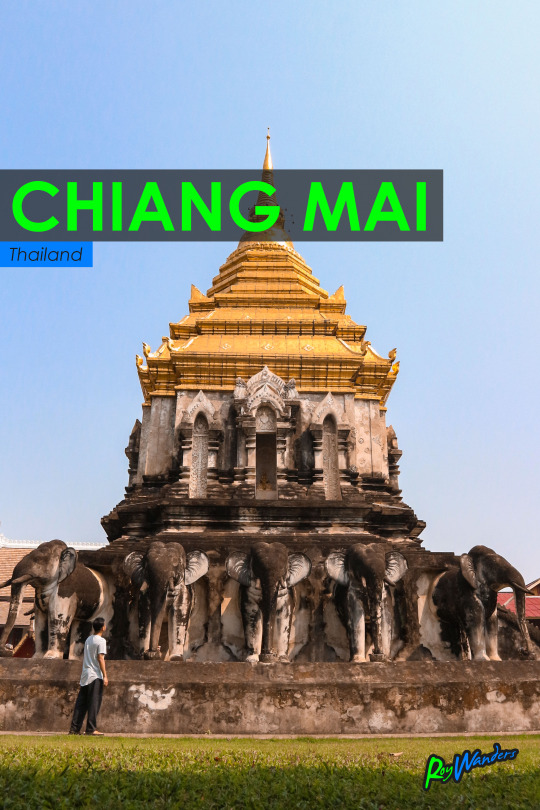
Just like most of the South East Asian Cities on the tourist route, Chiang Mai offers limitless Buddhist temples spread throughout the city. But what really stands out with this popular city north of Thailand is its rich history and colorful culture that still blend into the modern time.
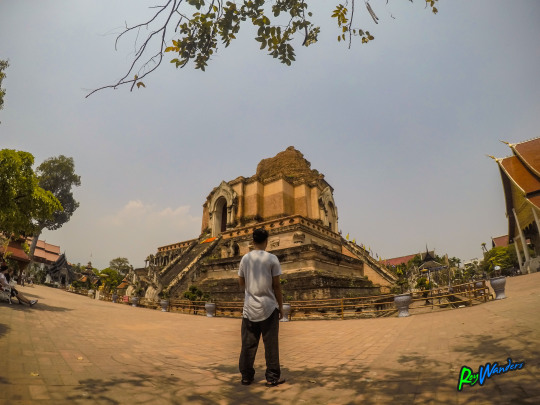
If you’re already tired with the hustle and bustle of Bangkok, Chiang Mai might be the place for you. It can still give you the hyper vibe Bangkok has but with a more laid-back feeling into it. It is still a province and far off from the capital, so expect to get a rustic, slow-paced, stress-free environment from time to time, which is actually a good thing!


I can actually compare it to Bali. You can party yet find relaxation at the same time. Though instead of beaches, you’ll be on the mountains here in Chiang Mai.
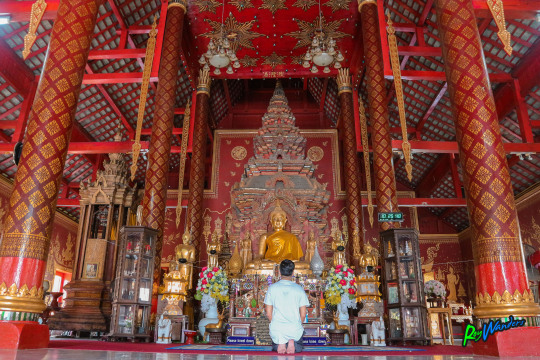
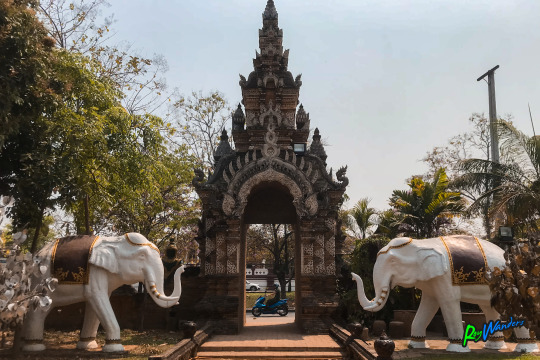

How To Get To Chiang Mai?

Your best bet in getting to Chiang Mai is flying in to Bangkok. Numerous international airports fly in to Thailand’s capital so that wouldn’t be a big issue.
Once you’ve stepped in to Bangkok, either you can stay for a few nights (recommended!) or go straight to your destination. Taking the night bus or train is the most famous option for budget travelers, yet flying in to Chiang Mai can also be cheap. Take note that the bus and train can take between 11 and 14 hours of travel. Make sure to check airlines like Thai AirAsia, Thai Lion Air, & Nok Air as well as they offer cheap flights domestically.
How To Get Out Of The Airport (Chiang Mai International Airport)?
I actually had done enough research on how to take the public transportation from the airport to the Old City, where most of the attractions and accommodations are. There is an option which looks like the most local one called Songthaew or a shared pick-up taxi (usually red in color) available once you exit the arrival hall. I’ve also bumped into an article online mentioning about airport shuttle vans with designated stops in the Old City. And of course, your “trustworthy” airport taxis ready for your service for a steeper price.

Despite of these options I got, I hadn’t taken any of them since good thing, Grab is available in Chiang Mai. Grab has always been a reliable travel app here in South East Asia. It works like Uber that has reasonable pricing and you’ll most likely get a safe and comfortable ride.
Well to be honest, I was rooting for the Songthaew but I was unsure on how to take them. LOL! I was seeing a lot passing by but it looked like some were privately hired. It was not clear to me which one to take and what to do next once I’ve hoped in. I also didn’t see any airport shuttle vans or at least a counter or a queue for them. I was just grateful that Grab was available. :D
What To Do In Chiang Mai?

Chiang Mai is known to be the most visited city in northern Thailand. Most activities in this part of the country can be seen here that’s why you’ll certainly never run out of things to do in Chiang Mai. My 3 days of stay in this beautiful city might be a quick one yet I can say that I had witness most of its beauty. Listed below are the top things I didn’t miss out on this amazing place.
1. Do Temple-Hopping

You might already be templed-out if you have been traveling to Indochina for quite some time now. I’m pretty sure that you have seen countless similar looking temples throughout your trip and the last thing you want to see is another temple.
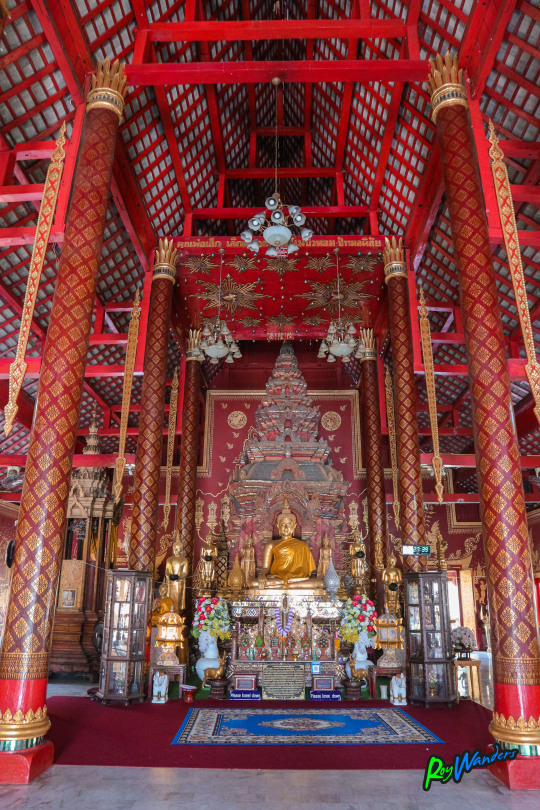
Chiang Mai might be an exception. I have checked out some of their famous temples and I can say that they differ from one another. Unlike the temples in Siem Reap, Cambodia (which are great by the way), temples here in Chiang Mai feels homely and simpler in structure. They are way less intimidating despite of the golden Buddhas and other statues all around.
Below are some of the cool temples I was able to visit:
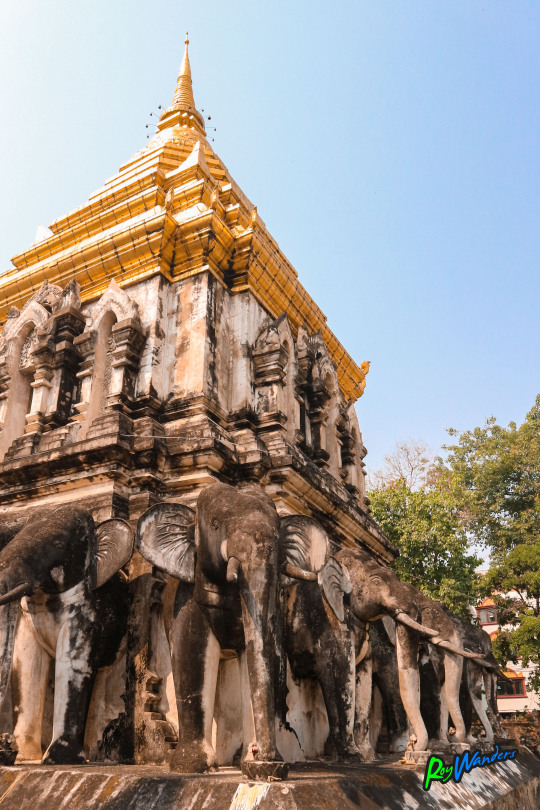
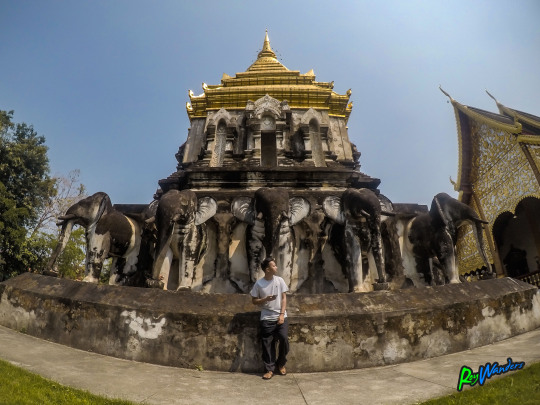
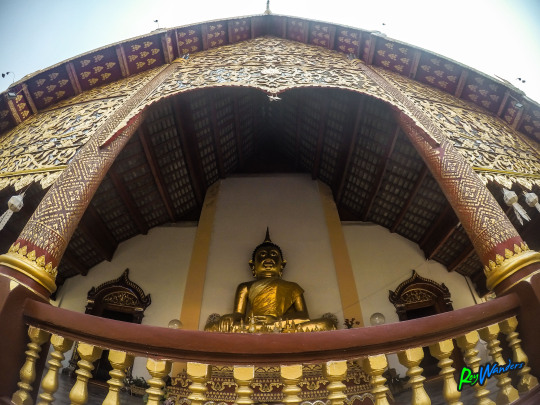


Wat Chiang Man

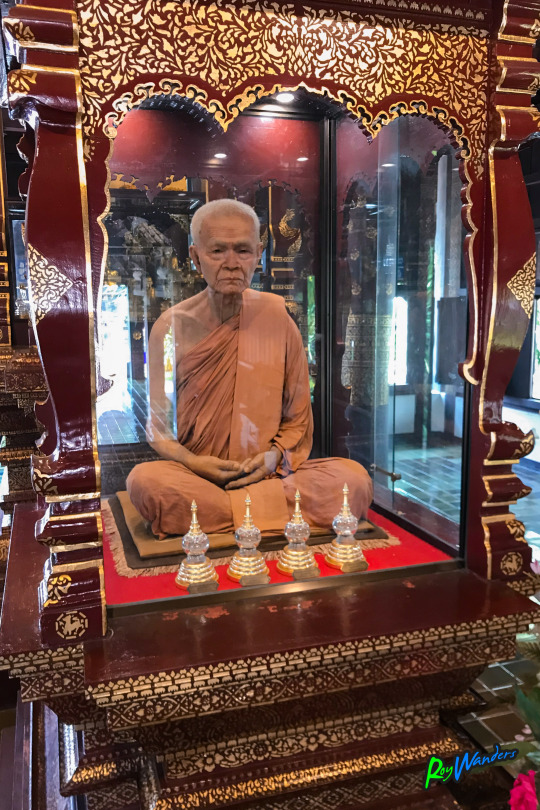


Wat Chedi Luang
This temple is my favorite in Chiang Mai as it has an impressive ruin chedi (pagoda) at the center of the temple ground.
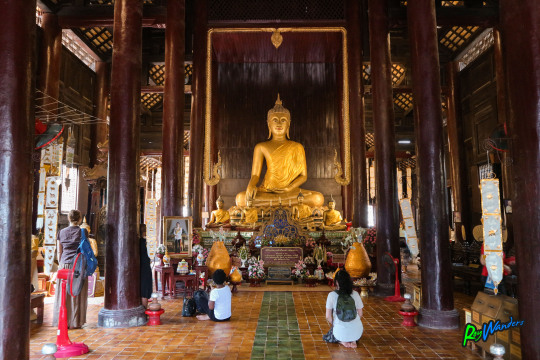
Wat Phan Tao
This temple was not listed on my itinerary but I was able to visit this on my way to Wat Chedi Luang.
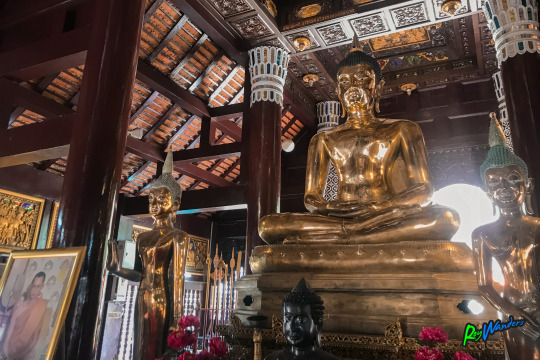


Wat Lok Molee

Wat Phra Singh

Wat Sri Suphan (Silver Temple)
Make sure to visit this temple at night to witness its illuminating beauty.
Situated up in the mountain with an astonishing view of the province, Wat Phra That Doi Suthep is considered to be the most popular for tourists. Unfortunately, I was unable to visit this temple as it is quite far off from the Old City.
2. Experience The Night Market



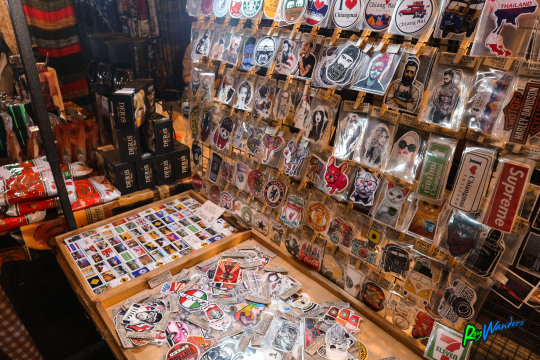

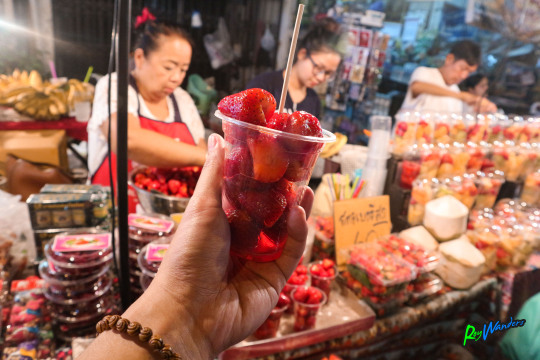
There are a few amazing night markets to choose from when you’re here in Chiang Mai but the most popular would be the Sunday Night Market or also known as the Walking Street along Ratchadamnoen Rd. It’s a kilometer stretch of delectable cuisine, artsy souvenirs, and cool local events.
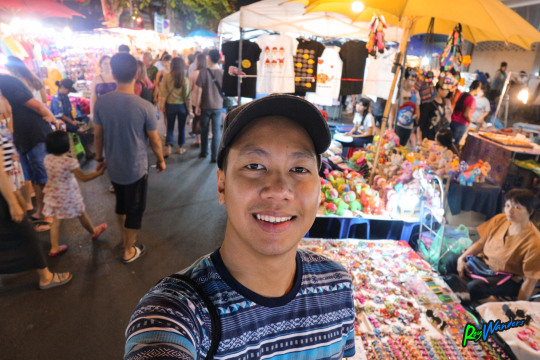
Evidently, this only takes place every Sunday from 4PM until around midnight.
3. Learn How To Cook Thai Cuisine


I’ve always been eager to try a cooking class ever since I started traveling. Food has always been a big part of all my travels and what better way to know more of the local cuisine than trying to make them by yourself!
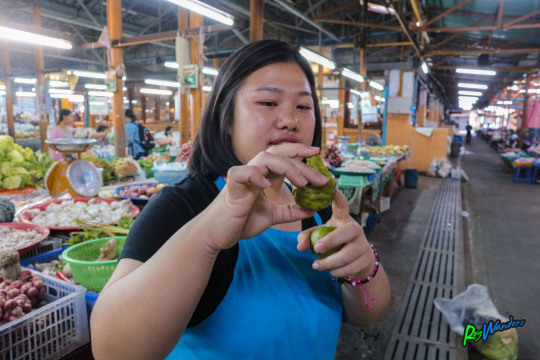
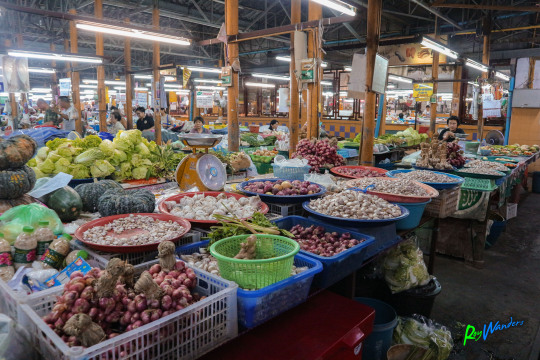
I almost had the chance when I was in Penang, Malaysia but was out of time. I found the cooking courses in Luang Prabang, Laos quite expensive on the other hand. The perfect moment came when I visited Chiang Mai!



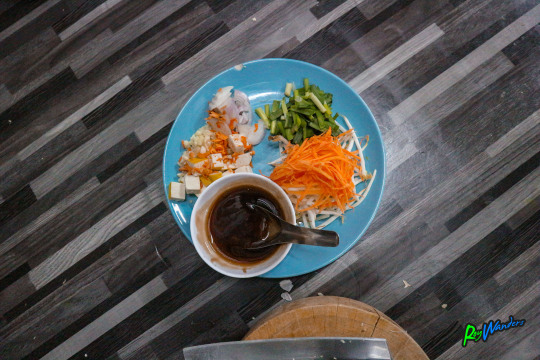
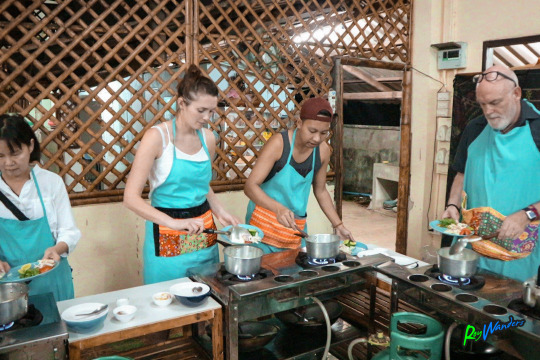

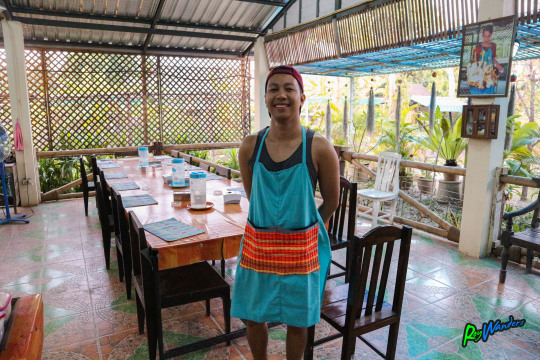
Thailand definitely is the best place to savor on a gastronomical experience. I was able to enroll for a 3 Dishes - Half Day Course for a reasonable price (the cheapest I saw online) under Mama Noi Thai Cookery School. This activity is available online via Klook and Kkday. If you’re new to Klook, make sure to sign up HERE to get a Php150 reward!
4. Eat A Lot!
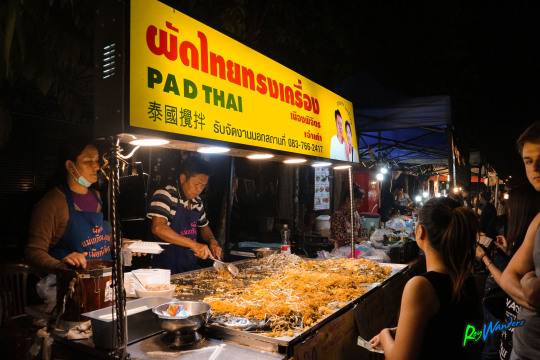
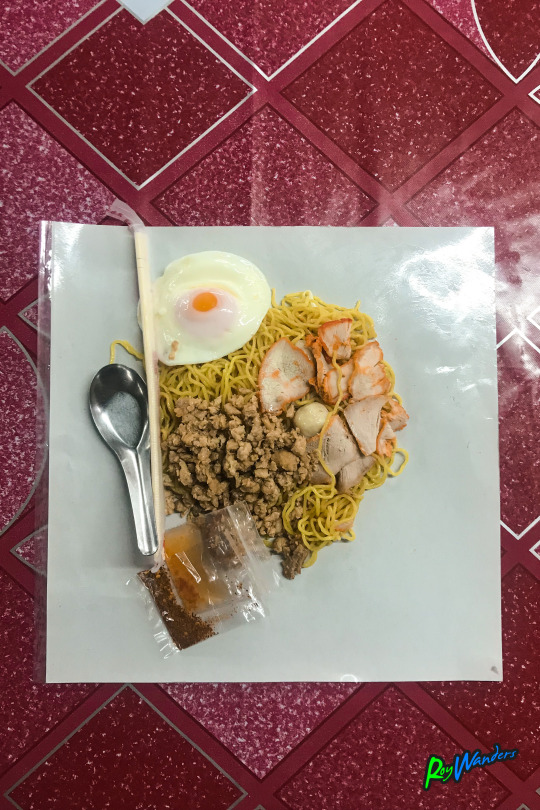
Thai cuisine has always been one of my favorites ever since. No trip to Thailand is complete without trying their authentic food choices.
If Pad Thai is screaming in and out of Bangkok, you might need to ditch that delectable plate for now and focus more on another local noodle dish made popular up here in the north.

Unlike Pad Thai that is dry, Khao Soi is another noodle dish served with a creamy spicy curry-like coconut broth.
Khao Soi Khun Yai is one of the popular stalls in the area that sells Khao Soi. I actually had my lunch here before I went to Wat Lok Molee which is just across the road.
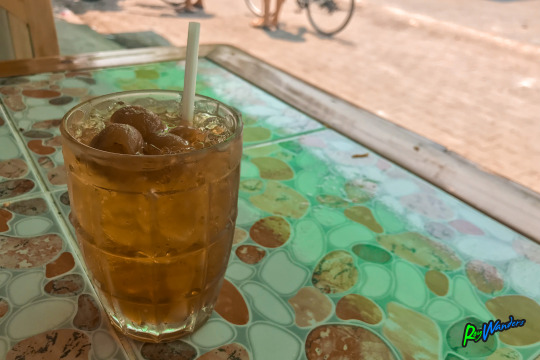
I had this sweet Longan Juice to pair with my spicy Khao Soi.
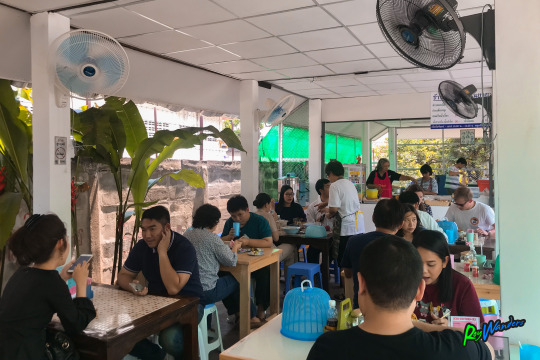
Tip: Make sure to go here early as they only run from 11:00AM to 2:00PM and usually sell out quickly.

Some travelers even continue their journey way up further to places like Pai, Chiang Rai, and even Luang Prabang in Laos. But Chiang Mai indeed has these countless attractions your eyes can enjoy. I could also say that this is a great place to retire. No doubt a lot of digital nomads has found a home in this charming ancient city with a modern twist. I can describe Chiang Mai as a city away from the hustle. Despite of the city thriving its way, Chiang Mai still manages to hold its tradition making it an authentic city that catches every traveler’s heart.
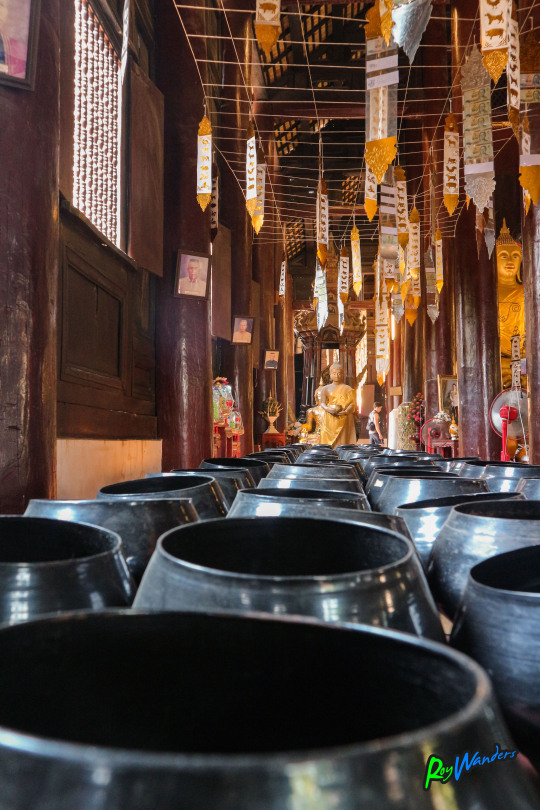
DISCLAIMER: Information above is based on my actual experience during my visit on March 2018. Details like prices, contact information, etc. may change due to different factors. Feel free to comment down below for updates. The conversion rates are estimated and current as of writing.
NOTE: I own all the images used on this blog post unless otherwise stated. Please don’t use these for any purposes, unless you acknowledge the owner. Thank you.
#Travel#Food#Thailand Travel#Thailand Food#Chiang Mai Travel#Chiang Mai Food#Blog 2018#Thailand 2018#Chiang Mai 2018#Thailand#Chiang Mai#Mama Noi#Khao Soi
2 notes
·
View notes